Reflective Analysis of Interprofessional Care in Nursing (NUR3299)
VerifiedAdded on 2022/08/20
|5
|703
|13
Homework Assignment
AI Summary
This assignment presents a student's reflective analysis of a clinical experience in nursing, focusing on an incident involving medication administration and the importance of interprofessional care. The student recounts a situation where they questioned a medication order due to observed vital signs, leading to a discussion with the registered nurse and doctor. The reflection utilizes the Gibbs Reflective Cycle to examine the student's feelings, evaluation of the situation, and analysis of the event, highlighting the significance of critical thinking, patient assessment, and effective communication (ISBAR tool). The analysis emphasizes the value of interprofessional relationships and the application of nursing governance standards, particularly those related to professional relationships, comprehensive patient assessment, and evaluation of outcomes, as outlined by the Nursing and Midwifery Board of Australia (NMBA). The student concludes by recognizing the benefits of reflective practice for professional development and improved patient outcomes.
1 out of 5
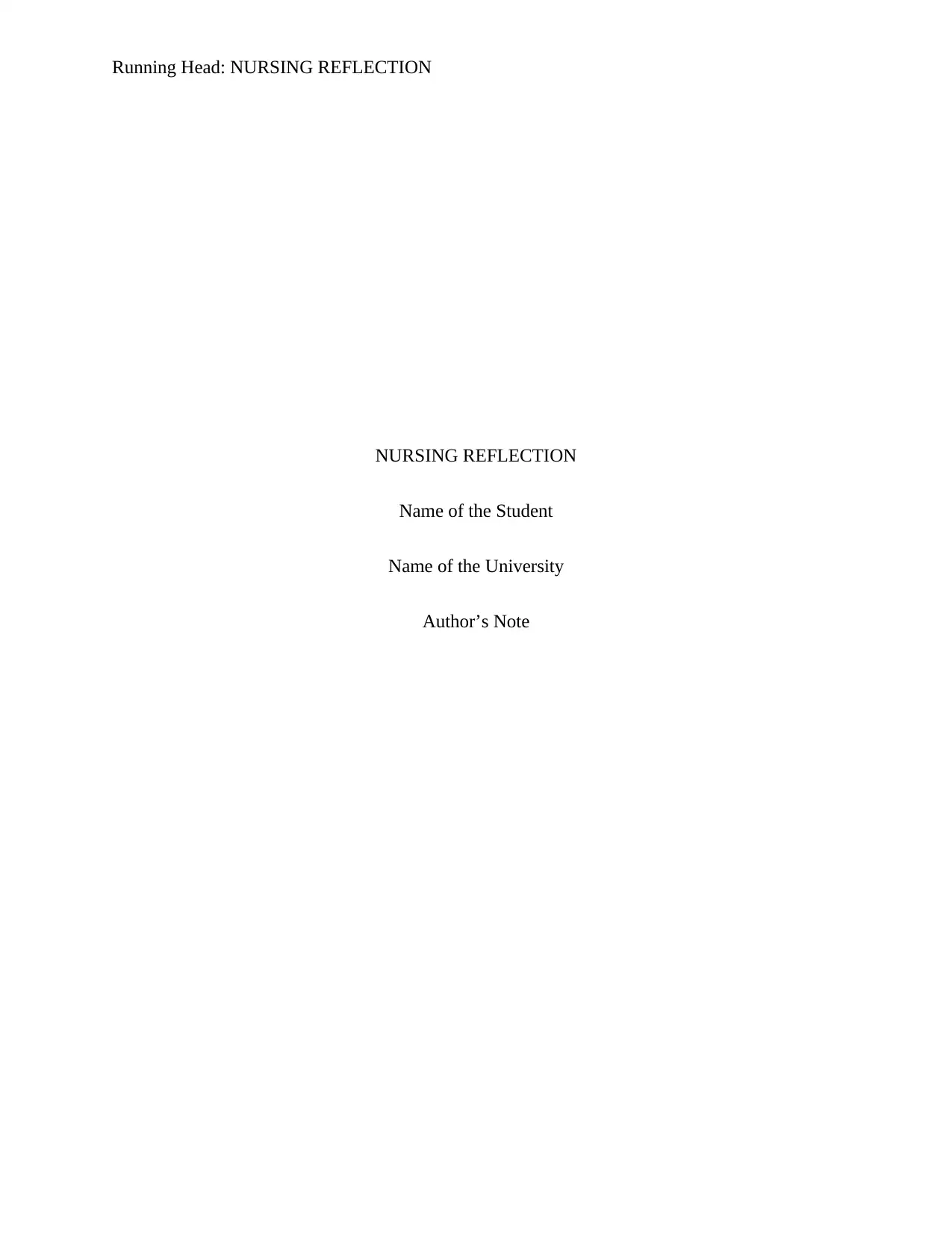
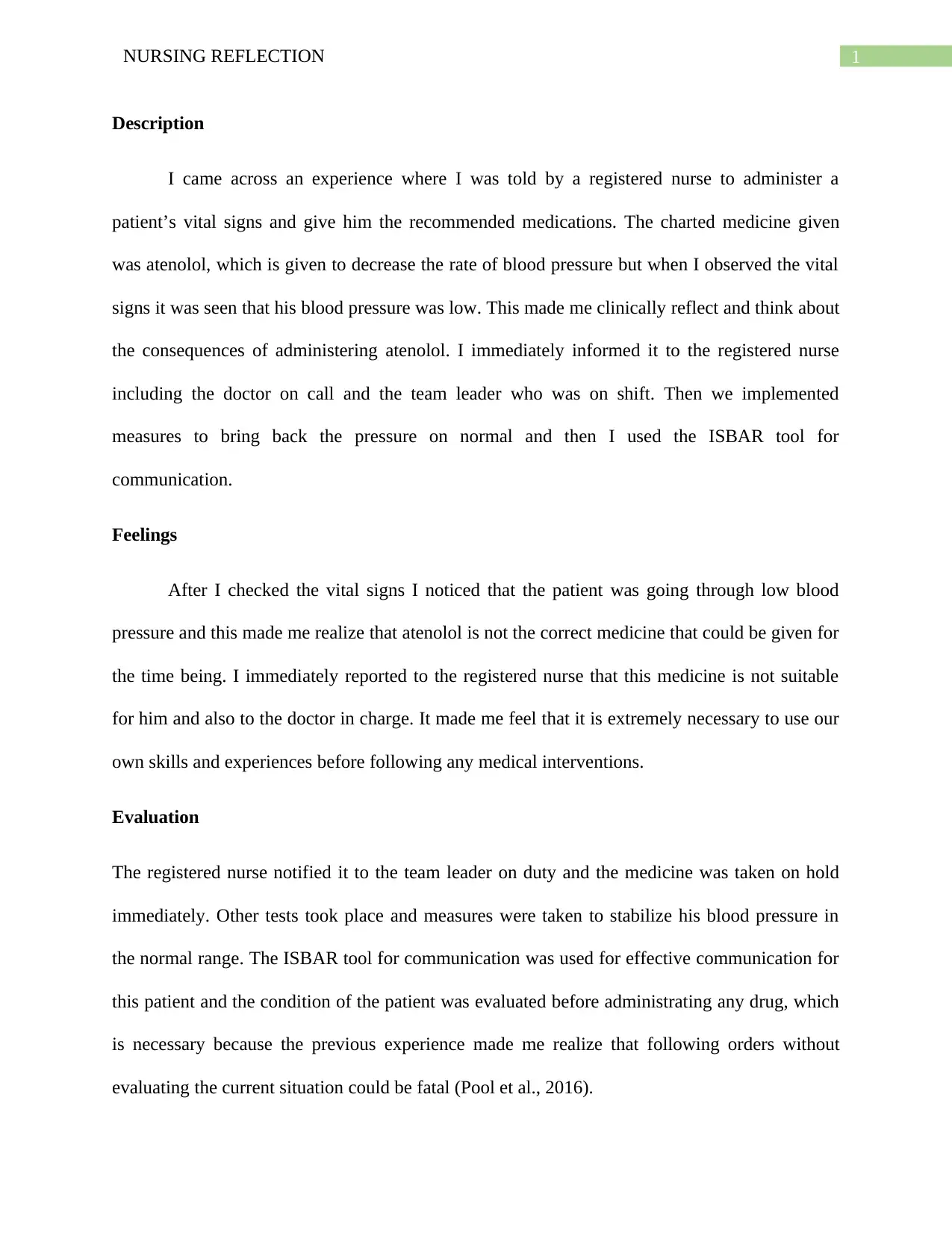
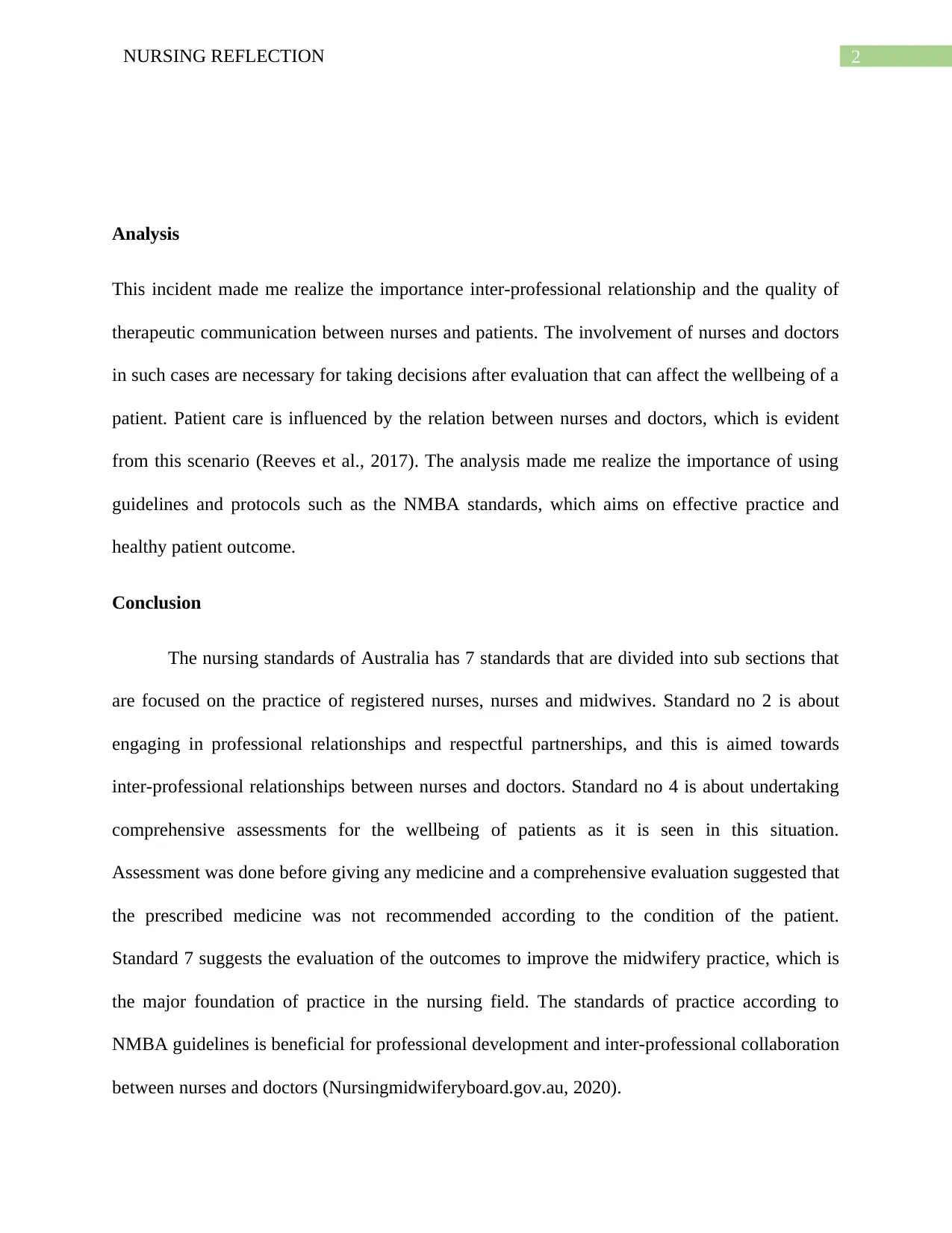

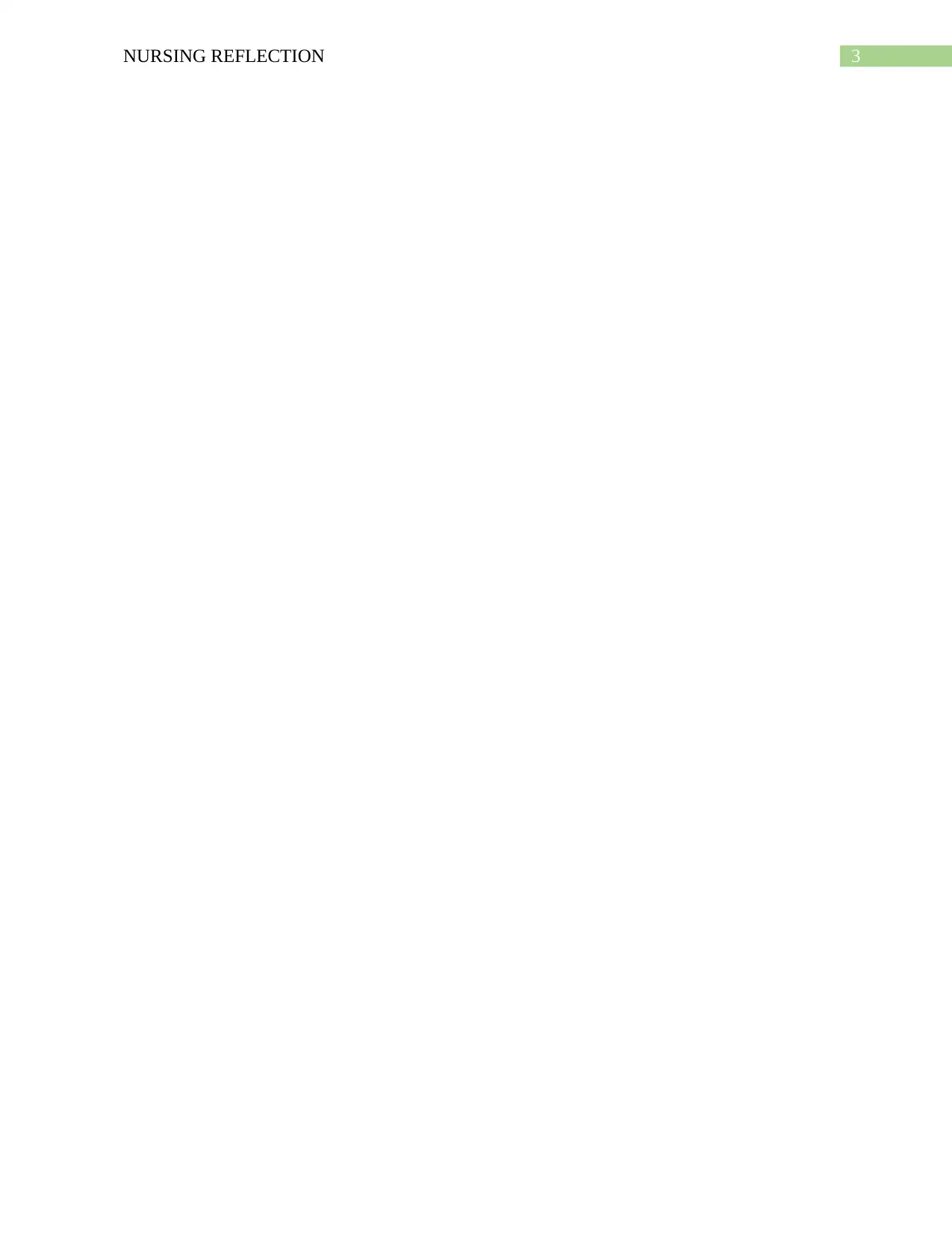
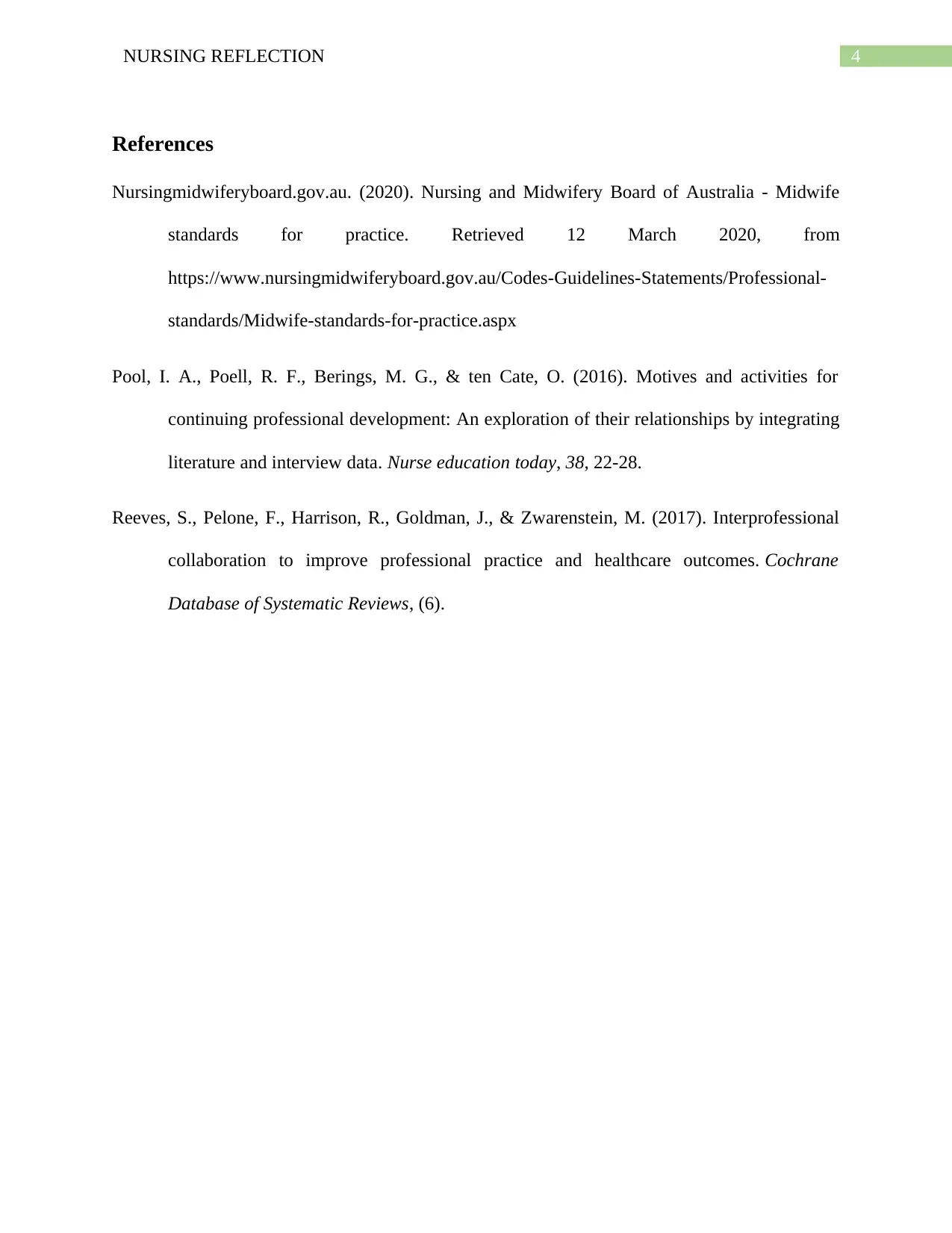






![[object Object]](/_next/static/media/star-bottom.7253800d.svg)